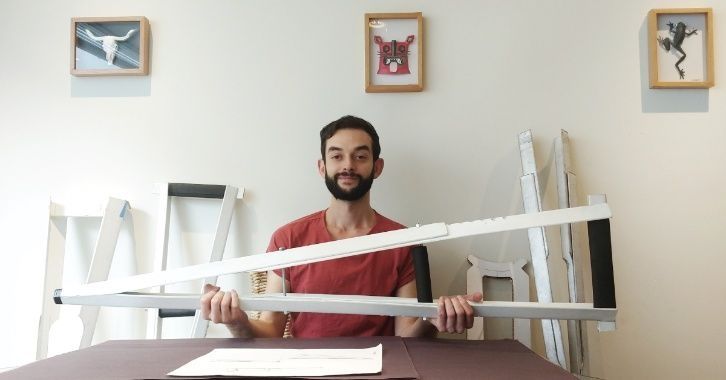Rafael Riego received third place in the 2019 James Dyson Award for this innovation.
Grow Your Business,
Not Your Inbox
Stay informed and join our daily newsletter now!
April
27, 2021
3 min read
This story originally appeared on México Desconocido
Cardboard crutches that could cost 40 Mexican pesos, be as light as a box, support 150 kilos and become a cane. They have approximately 4 months of life and that they are made of recyclable material makes them an even ecological solution. Oh, by the way, they are also beautiful! Specifically speaking of design.
[embedded content]The creator of these cardboard crutches is called Rafael Riego, he is Mexican and he has not only created this solution: a graduate of the Anahuac University is a creative mind who has found in cardboard a noble material to give shape to many of his ideas.
All these benefits earned him the third place award of the James Dyson Award 2019. This award is an international design competition created by the James Dyson Foundation, with a presence in the United Kingdom, Germany, the United States, Korea, Singapore and, since 2018, in Mexico.

Wood is also a material that has called it; however, his creations are as diverse as Rafael’s interests: he has practiced martial arts, loves skateboards, cats, music and origami.

Following him on his IG account, where he is as @rafariego , will be a great idea to follow his steps on how he will make his projects come true and marketable.
The crutches are part of the Accessible Mobility Orthopedics project, also called Amob. And, according to the dossier of his participation in the awards, here he explains his design and inspiration for the cardboard crutches.
What is it for
This orthopedic device — dual-purpose (crutches and cane) made of high-strength, low-cost cardboard — is designed to be accessible, lightweight, recyclable, and transportable.
Inspiration
I skated downhill and have practiced martial arts my entire life, sports where ankle and knee injuries are prevalent (I’ve had 5 sprains in all). Having to use crutches many times I began to pay attention to people with the same type of injuries. Not everyone has access to medical grade orthopedics and has to resort to unsafe home methods. I have designed an inexpensive method that is easy to manufacture to get everyone back on their feet safely.
Design
I studied different types of cardboard lamination and their production process to develop the best strength / weight ratio in terms of geometry and design, which came to me while visiting Valencia and I was inspired by the work of Santiago Calatrava: Ciudad de las Ciencias y las Arts. From there, it was a matter of trying out different designs and adjusting the geometry to make it work like a normal axillary crutch.



